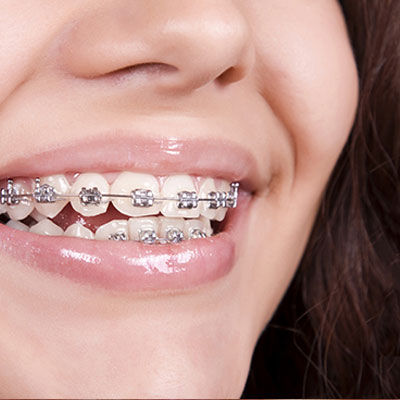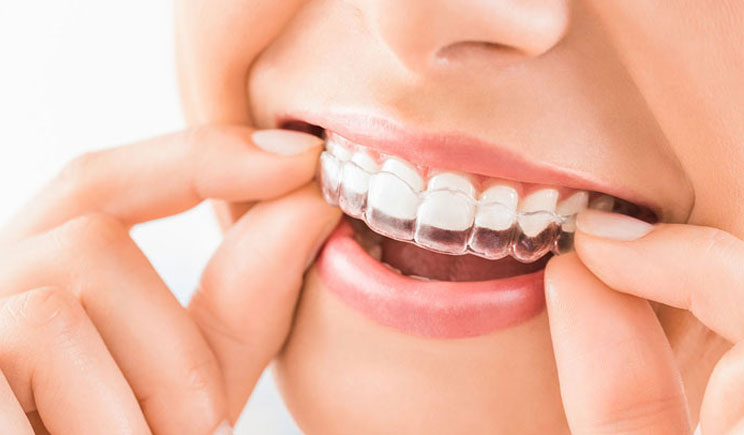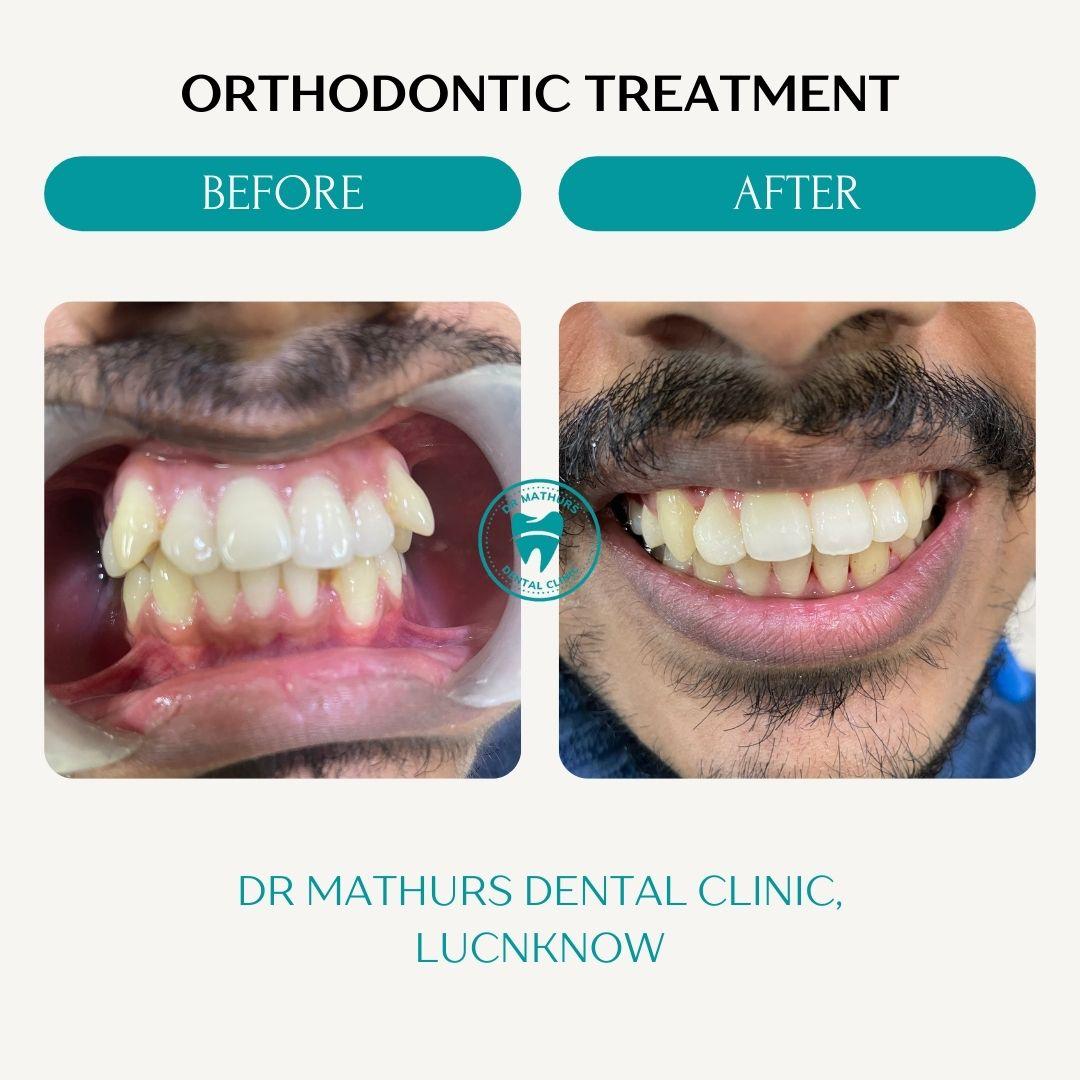Orthodontic Treatment

What is orthodontic treatment?
Orthodontic treatment is a way of straightening or moving teeth, to improve the appearance of the teeth and how they work. It can also help to look after the long-term health of the teeth, gums and jaw joints, by spreading the biting pressure over all the teeth.
Why should I have orthodontic treatment?
Many people have crowded or crooked teeth. Orthodontic treatment will straighten the teeth or move them into a better position. This can not only improve their appearance but also the way the teeth bite together, while also making them easier to clean.
In some patients the upper front teeth can stick out and look unsightly. These 'prominent' teeth are more likely to be damaged, but orthodontic treatment can move them back into line. In others, the way the upper and lower jaws meet can cause teeth to look unsightly and lead to an incorrect bite. Orthodontic treatment may be able to correct both.
When the teeth don't meet correctly, this can put strain on the muscles of the jaw, causing jaw and joint problems and in some cases headaches. Orthodontic treatment can help you to bite more evenly and reduce the strain.


At what age should I have orthodontic treatment?
Orthodontic treatment is generally best carried out in children, but adults can have orthodontic treatment - and more and more are doing. Age is less important than having the proper number of teeth. In children it may be necessary to wait for enough teeth to come through before starting treatment.
What does it involve?
The most important thing is to have a full examination. This will usually involve looking at your teeth, taking x-rays and making plaster models of your teeth.
We will then discuss what treatment is possible. Once you are sure you want to go ahead, the treatment can begin as soon as you have enough permanent teeth.
Will I need to have teeth taken out to make room?
You may not have enough room for all your permanent teeth and so it may be necessary to take out some permanent teeth to make space. We will tell you whether this is the case. Sometimes space can be created using other forms of treatment.
How is treatment carried out?
Orthodontic treatment can be done by many sorts of appliances, which most people know as 'braces'.
What is a removable appliance?
Simple treatment may be carried out with a removable appliance (a plate that can be taken out to be cleaned). It has delicate wires and springs attached, which move the teeth using gentle pressure.


What is a functional appliance?
It is sometimes possible to change the way the jaws grow, using orthodontic appliances. These functional appliances use the power of your jaw muscles and can help with certain types of problem.
What are the brackets made of?
Fixed braces are not always made of metal. Plastic and ceramic can be used, especially for adults.
How long will it take?
The length of treatment depends on how severe the problem is, and may take anything from a few months to two-and-a-half years. Most people can be treated in around one year.
What happens when the teeth are in the right position?
When treatment is finished the teeth need to be held in position for a time. This period is called retention, and the appliances that hold the teeth in place are called retainers.
The retainers hold newly straightened teeth in position while the surrounding gum and bone settles. The retainers can be removable or fixed depending on the original problem.
How many visits will it take?
Orthodontic appliances usually need adjusting every 4 to 6 weeks.
How do I care for my brace and teeth?
It is important to continue to have your teeth checked by your dentist while having orthodontic treatment. You also need to take extra care of your teeth and mouth:
- Clean your teeth carefully every day, including between your teeth where you can. Appliances are delicate and you need to make sure you clean them carefully so that they do not break. Your dentist will be able to show you the special techniques to use depending on the appliance you are wearing.
- Cut down on how often you have sugary foods and drinks. Avoid 'snacking' on foods or drinks containing sugars, and on fizzy drinks. Also, sticky and hard foods may damage the delicate orthodontic appliances.
- Brush your teeth for two minutes, twice a day with fluoride toothpaste and, if necessary, use a mouthwash.


Dental Aligners
Dental aligners are clear, custom-made trays designed to gradually straighten teeth. They serve as an alternative to traditional braces and are typically made from smooth, BPA-free plastic that is molded to fit snugly over the teeth. Aligners work by applying controlled, gentle pressure to specific areas of the teeth, gradually shifting them into the desired position.
Here's how the process works:
- Initial Assessment: A dentist or orthodontist evaluates your teeth with X-rays, photos, and digital scans or physical impressions. They create a treatment plan that maps out the step-by-step movements of your teeth.
- Custom Aligners: Based on the treatment plan, a series of custom aligners is created. Each set of aligners is slightly adjusted to promote gradual movement.
- Wearing the Aligners: Aligners are typically worn 20-22 hours a day and are only removed for eating, drinking (other than water), brushing, and flossing.
- Progression: Every 1-2 weeks (depending on the treatment plan), you switch to a new set of aligners that further adjust your teeth. Each set continues the process of moving teeth slightly closer to the ideal position.
- End of Treatment: Once the teeth are aligned, patients usually wear a retainer to help maintain the new position of their teeth.
Aligners are popular due to their discreet appearance and ease of removal, allowing for better oral hygiene and the freedom to eat without restrictions. They're effective for correcting mild to moderate misalignment, but complex cases might still require traditional braces.


Call Us Today
+91 522 4004067, 8318280110

Quick Links
Help & Support
Useful Links
Working Hours
- Monday - Saturday : 10:00AM - 02:00PM
- Monday - Saturday : 04:00PM - 09:00PM
- Sunday : by appointment